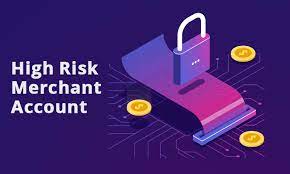As a business owner, you are always looking for ways to minimize risk and protect your business. One way to do this is by obtaining a high-risk merchant account. By definition, a high-risk merchant account is a type of account that allows businesses to process credit card payments even though they may be considered to be high risk by banks and other financial institutions.
There are a number of reasons why a business may be considered high risk, such as:
- Having a history of chargebacks or refunds
- Selling products or services that are considered to be high risk
- Operating in an industry that is known for fraud or chargebacks
- Being a new business with no credit history
- Having bad credit
If your business falls into one or more of these categories, you may have a difficult time obtaining a merchant account through a traditional bank. However, there are a number of specialized high-risk merchant account providers that can help you get the account you need.
When you apply for a high-risk merchant account, the provider will typically require you to submit additional documentation about your business. This may include financial statements, tax returns, and other information that will help the provider assess the risk of your business.
The provider will also likely charge you higher fees than what you would pay for a traditional merchant account. This is because high-risk businesses are more likely to have chargebacks or refunds, which cost the provider money.
Despite the higher costs, a high-risk merchant account can be a valuable tool for businesses that may not be able to obtain a traditional merchant account. If your business is considered high risk, make sure to shop around for the best deal on fees and terms.
What are the differences between low-risk and high-risk merchant accounts?
The main difference between low-risk and high-risk merchant accounts is the fees that are charged. Low-risk merchant account providers typically charge lower fees than high-risk merchant account providers.
Another difference between the two types of accounts is the documentation that is required. Low-risk merchant account providers typically require less documentation than high-risk merchant account providers.
High-risk merchant account providers may also impose stricter terms and conditions than low-risk merchant account providers. For example, a high-risk merchant account provider may require you to maintain a higher balance in your account or may limit the amount of money you can process per month.
What are the benefits of a high-risk merchant account?
There are a number of benefits that come with having a high-risk merchant account.
One of the biggest benefits is that it allows you to process credit card payments even if you are considered to be high risk by banks and other financial institutions.
Another benefit of a high-risk merchant account is that it can help you protect your business from fraud and chargebacks. This is because high-risk merchant account providers typically have stricter terms and conditions than traditional merchant account providers.
Lastly, a high-risk merchant account can help you grow your business by giving you access to new markets. For example, if you sell products or services that are considered to be high risk, you may not be able to obtain a traditional merchant account. However, with a high-risk merchant account, you will be able to sell your products or services to consumers in this market.



